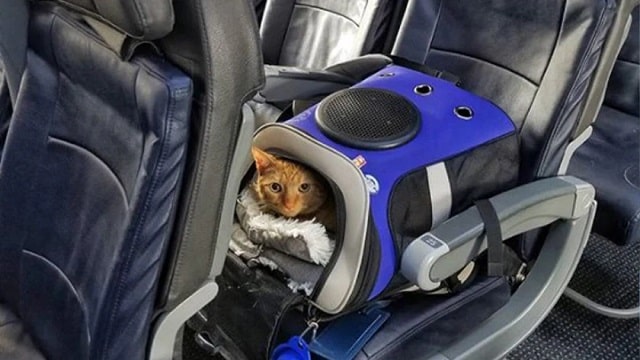Traveling can be very stressful for a cat, so its owner must try to make it feel safe and confident so that it is a good experience for both.
Cats are very territorial and also very nervous animals. They like to be in an environment that they know and when for some reason they have to move, they do not feel comfortable. Traveling can be very stressful for a cat, so its owner must try to make it feel safe and confident so that it is a good experience for both.
Cats are pets that are usually found at home or in the surrounding area. They do not venture to faraway places or go for walks, as can happen with dogs. Therefore, when it comes to moving them from one place to another, we will have to do most of the work. This also means having the necessary tools to make the trip easier.
Although it may seem that this is only necessary when you go on holiday and take your pet with you, this is not true. Something as common as a visit to the vet requires practically the same preparation. No matter how short the trip, it is not advisable to carry your pet in your arms or in some improvised space, such as a box or a bag.
Planning the trip
Traveling with your cat requires a little preparation. It is not enough to put your pet in a cat carrier, but you must first try to familiarise it with it so that the journey is as smooth as possible.
Cats, in addition to getting nervous when changing location, can also get sick during a trip, just like humans do. To avoid problems in this regard, it is best to consult a veterinarian. The specialist can prescribe a sedative to try to alleviate their nerves and also to prevent vomiting.
If we have never traveled with the animal before but its behavior shows nervousness, it is advisable to give it a light sedative, which can be mixed with its food or drink so that it does not even notice it when it takes it.
To avoid vomiting, in addition to medication, some people recommend not feeding the cat several hours before departure. This does not prevent dizziness, but it does prevent vomiting. If it is a long trip and/or on public transport, it is necessary to have the pet’s documentation on hand. On the plane or train, it is mandatory to present it before starting the journey.
During the trip, and seeing how the animal reacts, you can feed it. It is important to bring water to give it a drink from time to time, especially when traveling for several hours. We must remember that what we want is for the animal to feel comfortable in a situation that is very stressful for it.
Transport
The most common way to transport a cat is in a cage designed specifically for this type of pet. They are easy for the owners to handle, usually have a handle, and allow the cat to feel comfortable inside, from where it will have a good view of what is going on around it but will not be able to get out. To make the trip even more pleasant, you can place a blanket or toy that the cat is familiar with inside. You can even spray the cage with feline pheromones.
The first time you are going to introduce your cat to its cage, you should consider carrying out several tests beforehand. It may take a while for it to adapt to the cage and this may cause a delay in a planned trip. To avoid scheduling problems, open the cage days before, let it enter it, and become familiar with it.
No matter how short the journey is, it is not advisable to carry the pet in your arms or in some improvised space.
Means of transport
The means of transport you are going to use for the trip is also important. Having your own vehicle is the most advisable because it allows you to pay more attention to the animal in the sense that you can stop from time to time, let it out of the cage, pet it, play with it, and allow it to walk around a bit.
If you choose to travel by car, you must bear in mind that the animal must be in a cage, which should be placed on the floor of the rear of the vehicle. Never in the trunk, because the darkness will make the cat more nervous.
Public transport such as trains and buses, as well as certain airlines, allow you to travel with your pet. You should check their conditions before setting off and try to make sure that they allow you to take the cage with you to your seat.
Keep in mind that this usually carries an extra cost, but it will be worth it. If your pet is relegated to the hold, with the luggage, it will surely be an unpleasant experience for the cat , who will feel abandoned in an unfamiliar space. When the trip is over, he will be nervous and reluctant to any contact.
Apart from organising a trip in which the animal is accompanied by its owner, there are many companies that today offer pet transport for events such as moving house. They usually have specialised personnel who accompany the cat throughout the journey.

